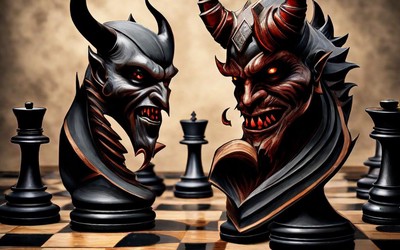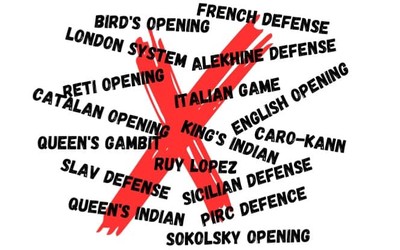
Why Bishops Are Generally Better Than Knights
Among the diverse array of chess warriors, bishops and knights are much more tricky pieces, each possessing distinct characteristics. However, bishops often take precedence over knights. I'll delve into the reasons why bishops are considered superior, backed by insightful facts, opinions and examples.1. Mobility Matters: Bishops Cover More Ground
Bishops, with their long-range diagonal movement, boast superior mobility compared to knights. With the ability to traverse diagonally across the entire board, bishops can influence and control a vast number of squares. Knights, on the other hand, are constrained by their L-shaped jumps, cover less ground and may struggle to rapidly reposition themselves during critical moments especially in the endgame phase.
Material is equal but white is completely winning!
2. Control of Color Complexes: Bishops Dominate
Bishops excel in controlling specific color complexes, namely light or dark squares. This specialized control allows bishops to dominate certain regions of the board, creating a strategic advantage. Knights, with their erratic movement, find it challenging to establish such territorial dominance.
3. Long-Term Influence: Bishops' everlasting effect
Bishops often maintain their effectiveness throughout the game, regardless of the board's state. Their long-range scope and movement allows them to adapt to changing positions and contribute to both offensive and defensive strategies. Knights, on the other hand, may struggle to find optimal placements in closed or cluttered positions where squares are fully controlled by opponents' pawns or pieces.
Take this famous game. At move 16 the position is quite closed and the black knights are completely dominated by white's pawns.
4. Coordination and Attack: Bishops As A Powerful Pair
When bishops work in tandem, they form a potent combination that can control key diagonals and launch coordinated attacks. Their ability to cover complementary areas of the board enhances their overall strategic impact. Knights, while capable of cooperation, may face challenges in synchronizing their movements effectively when manoeuvres are required.
5. Endgame Prowess: Bishops Shine in Open Positions
In the endgame, where the board often opens up, bishops tend to shine. Their long-range mobility becomes even more pronounced, allowing them to control crucial diagonals and contribute significantly to checkmate scenarios and blockading passed pawns from promotion. Knights, with their limited range, may struggle to exert the same level of influence, made especially worse if placed poorly.
GM Garry Kasparov's Opinion
In a WIRED interview, Garry Kasparov said, "The general assumption is that the pieces are of equal value and I think Bobby Fischer was the first one who indicated that Bishops should be valued higher at 3.25 points and 3 points for knights. I was more reserved, I valued Bishops at 3.15 points but now looking at some of the computer games I would say that Fischer's evaluation was correct. After machines played millions of games, we learned that a bishop's value is simply higher, since in many more cases it was a more useful piece."
You can view it here. Time stamp: 0:30
https://www.youtube.com/watch?v=D3uvvA7dyoI
Conclusion: The Bishop's Grandeur
While both bishops and knights have unique strengths, the overall consensus in the chess community leans towards the superiority of bishops. Their superior abilities make bishops valuable assets on the chessboard. As you embark on your next game of chess, remember the dynamic duo of bishops and appreciate the strategic depth they bring to the game.
Last Note: This is an opinion blog so please don't bombard me with criticisms. Anyway, thanks for reading till the end. Peace out.


